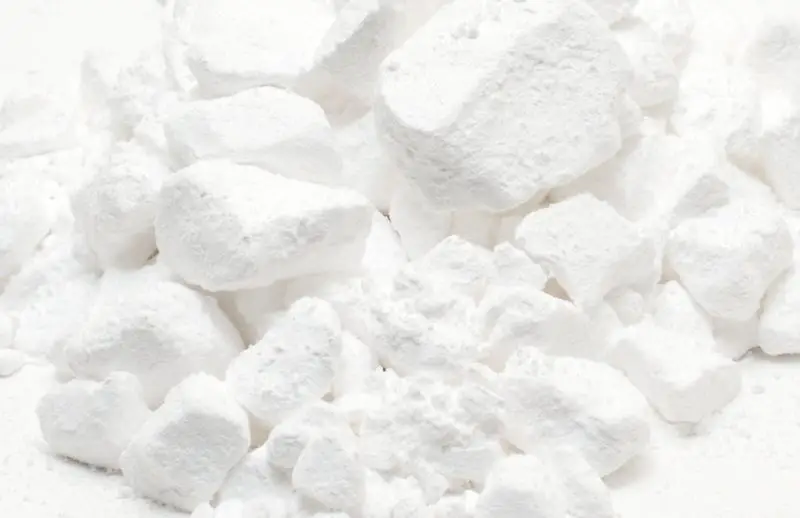To climbers, the saying, “Get a grip,” is part of the sport. Whether you’re out climbing cliffs or mastering the wall at your local gym, using climbing chalk is a must. In a perfect world, you’d probably go climbing every day, but in reality, your climbing chalk likely sits around waiting for you, which begs the question: does it go bad or not? The answer: it depends. Allow us to explain.
First though, let’s talk about the types of climbing chalk you might use.
Loose chalk
Loose chalk is convenient because it’s already ready to go since it’s ground up. You just pour it into your chalk bag. It’s best for rock climbing because it has drying agents that keep your hands dry and give you a better grip. It tends to be more expensive, plus it can spill if you’re not careful. If you plan to use this in your local gym, you might want to check the rules. Most of them don’t want climbers using powdered chalk since the fine dust gets in the air and clogs the ventilation as well as the other patrons’ lungs.
Chalk balls
Chalk balls are similar to loose chalk, though they come contained in a mesh sack that’s mostly sewn shut or refillable. It’s probably the best solution for indoor climbing, plus it’s easy to apply. If you’re outdoors though, this might not be the best climbing chalk since it’s hard to completely coat your hands with it for longer climbs.
Block chalk
Block chalk is just a big chunk of chalk. You can crush it to the consistency you like plus it’s less messy to carry whole. You can separate it into your own chalk bag, making it very convenient.
What’s the shelf life for your chalk?
Whichever type of climbing chalk you favor, you might be wondering how long it lasts on the shelf. As mentioned before, you’re not climbing every day, so it stands to reason that knowing how long your chalk is good for is important. You don’t want to plan a climb and grab your chalk only to find it’s expired.
Even if your chalk comes labeled with an expiration date, you can breathe a sigh of relief. Climbing chalk doesn’t expire in the same way food does. It won’t suddenly stop being chalk and turn into something else (like whatever that was at the back of your fridge).
That being said though, the shelf life of climbing chalk will continue to have a high quality if you keep it stored properly (more on that in a moment). When you take care of your climbing chalk, it should have the same consistency as it did when you first bought it. Over time, if not stored correctly, it may not give you that same feeling because the drying agent in it loses its effectiveness over time. Rest assured, it will still work, but you might not get that tight grip you once had with it.
To keep that from happening, you should know how to properly store your climbing chalk so it’s always good as new no matter how old it is.
How to store your climbing chalk
Depending on how much chalk you’ve got, you might not want to store it all in one place. For example, say you buy a big bag of loose chalk or even a block of chalk. You can keep some of it in the original bag it came in, unless it doesn’t seal back up. For this chalk that you have at home and don’t yet need, you can store it in a plastic zippered bag to keep it fresh and from spilling all over your home.
For your chalk on the road, getting a chalk bag is great. It can snap onto your safety harness. Some of them even have storage compartments so you can keep your other essentials along for the climb. These usually have a drawstring top which are very effective. You’ll want one that’s water resistant so that should encounter foul weather, your chalk won’t get wet.
That kind of bag should keep your chalk safe and sound and prevent spills, but if you’re paranoid, you can always stick it inside one large plastic zippered bag when you’re transporting it to and from the climbing gym or while it’s in your car. There’s nothing worse than a spill.
For chalk you’re in the midst of using, it should stay effective for your climbs, but when you’ve got some that’s not in use (like that block of chalk back home), you’ll want to keep it sealed, air-tight, so that it’s not exposed to moisture or it will lack that stellar consistency it once had that made your climbs so comfortable.
While spills are a nuisance, even worse is when your chalk is exposed to moisture. And worse than that? When it gets wet. But don’t worry! Keep reading to find out what to do when that happens!
What to do when your chalk gets moisture on it?
There are two ways your chalk can get wet. The first would be to not store it correctly in humid conditions, resulting in a greasy and wet feel. The other would be if you got caught in rain or fell into a river or some other body of water while holding your bag of chalk. You might be wondering if you can ever use your chalk again.
Again, that depends. Climbing chalk is pretty cheap. You can always go buy more. But if you’ve just bought a big block or have plenty of it stored in a chalk ball, then you might be willing to take a chance and test your patience on drying it out.
Some climbers have taken to using an oven to dry out their chalk. MgCO3 which is what your chalk is made of has a melting point of 540°C, so technically even if you turn up the dial on your oven, you should have pretty good results.
If you want to try that out, put your chalk on a baking sheet and preheat the oven to 120°C. If you’re using a convection oven, turn off the convection or you’ll have chalk blown all over the oven. Leave it for several hours and the moisture should be drawn out. A wise way to do this is to start with a test amount of your wet chalk and see how it goes. If you like the results, you can continue with this method.
Another method that has worked very well for climbers living in hot and dry climates is to set their wet chalk bags outside in the sun all day. The key to this is that it must be hot and dry, there must not be any precipitation or humidity whatsoever for this to work. Placing it outside in a humid setting will only keep it feeling greasy and moist, not exactly climbing material.
What you do is up to you, but if you’d rather not worry about wet chalk, we suggest you take the time to store it properly. You should also invest in proper climbing equipment that can help keep it dry should you get caught out in the rain.
Liquid chalk
With the arrival of liquid chalk, many climbers, both indoors and out, have made the switch. It’s magnesium carbonate mixed with alcohol for a quick and easy application. Environmentalists love it because unlike powder, it doesn’t go everywhere. Gym owners love it too because it’s a no-muss, no-fuss way for climbers to apply chalk they need for grip.
You simply squirt it onto your hands and spread it around. It gets into all the little cracks and crevices of your hands and is really easy to distribute. It tends to stick better to your skin and lasts a lot longer. On the downside, it does dry your hands out a bit more, thanks to the alcohol. If you have dry skin, you may find liquid chalk to make things worse. Dry, cracked hands can be painful, especially in cold weather, so, check out our other post to learn more about the importance of skin care for climbers. After each climb using liquid chalk, be sure to cleanse your hands thoroughly with a moisturizing wash and then hydrate them with an intensive moisturizer, something that’s thick and creamy, to restore your hands, our favorite salve is made by a company called Joshua Tree (Amazon link).
If you’re on the fence about using liquid chalk, you can always get some to try for a short climb or on an indoor course. Keep your chalk ball along too just in case. You never know when you might need it. Liquid chalk is best to create a base layer so that your climbing chalk sticks and to prevent sweat. You can also use it with bug spray or sunscreen to avoid getting slippery fingers.
Shelf life for liquid chalk
Because of its liquid state, liquid chalk will dry out fast if you don’t watch out. You can even make it yourself with your regular climbing chalk and a little rubbing alcohol. Simply smash a block of chalk up so it’s nice and fine or else the texture will be goopy. Once it’s ground, add the rubbing alcohol, which should be 70% isopropyl alcohol (Amazon link).
You should only make what you need because, as mentioned, liquid chalk tends to dry out if you don’t keep it well. For every cup of chalk you use, you’ll want to use half as much of the alcohol. Mix it well and you’re ready for your climb. You should store it in an air-tight, totally sealed container or else you’ll find it dries up before you can use it.
When you make your own liquid chalk, it could dry out by the end of the day if you don’t store it right. Since it’s so easy to make, you should make it just prior to your climb so it stays fresh. If you plan on making it ahead of time, you’d better invest in a quality container that won’t leak and will keep it from drying.
With both homemade and store-bought liquid chalk, the shelf life will last a while as long as you store it properly.
How to best store liquid chalk
When it comes to store-bought liquid chalk, you should be pretty good to go for a while since the containers they’re sold in are designed to keep the product fresh. If you want to be extra sure they don’t leak or become subject to environmental stressors, you can always chuck your tube or vial of liquid chalk into a plastic zippered bag just as an extra safety measure.
If you’re going to turn some of your climbing chalk into liquid chalk, take heed that your containers must be able to keep air out. If not, your liquid chalk won’t last. It’s why you should always bring a backup chalk bag along just in case. You don’t want to be mid-climb and discover the liquid chalk you made has dried out or that you accidentally didn’t screw the cap on right with your store-bought liquid chalk. Always be prepared and you’ll have a strong hold on your climb.
Conclusion
Essentially, if climbing chalk goes bad, it’s because of something you’re doing. Take the steps to keep it stored properly both at home and on the go, and your chalk supply will last you a long time. Even liquid chalk can last a while too if you take the proper steps to keep it from drying out. You can dry out your wet chalk, but you may find it easier on you to just buy more. The bottom line is that you have options with your chalk and how to keep it, and having options always makes for a better climb.

